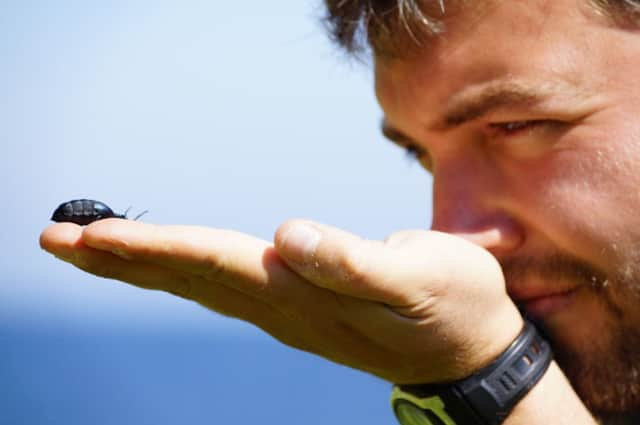More than just birds under RSPB’s wing
This article contains affiliate links. We may earn a small commission on items purchased through this article, but that does not affect our editorial judgement.


When asked what is the first word that comes to mind when hearing the name RSPB, the vast majority of people will respond with, “birds”. This comes as no great surprise; after all the RSPB’s heritage was founded on bird conservation. Some of our most incredible work has involved saving bird species (I’m thinking of bitterns, corncrakes and red kites) and of course the “protection of birds” is in our name. But is that all the RSPB is about?
Currently our UK reserves cover over 140,000 hectares of some of the most incredible habitats our islands have to offer. From rolling machair to rugged mountain tops our reserves provide safe haven for some of the country’s most threatened species. It would be impossible to attempt to conserve birds in isolation of the rest of the natural world and of course this isn’t what the RSPB is about.
Advertisement
Hide AdAdvertisement
Hide AdBirds are an important piece in the jigsaw that makes up our fascinating and complex natural world, but they are only a piece. Without the rest of the pieces made up by fungi, invertebrates, mammals, plants, mosses, reptiles, amphibians and the landscape itself, the jigsaw would not be complete.
Unfortunately many of the species that make up this jigsaw are just as threatened as the birds we are famous for conserving. The 2013 State of Nature report highlighted the dramatic decline we have seen in the UK’s wildlife, with 60 per cent of the 3,000 species assessed showing a decline over the last 50 years.
So what is the RSPB doing to help conserve these species?
It may surprise some (but hopefully not many) that the RSPB has been working on targeted non-avian conservation work for many years. Our work in the past has included species such as the bizarre green shield moss, endangered aspen hoverfly and enigmatic great yellow bumble bee. This work continues to grow with 2014 showcasing itself as one of our best years for species conservation; one of the highlights being our work on the rare natterjack toad.
Last year, alongside partners in amphibian and reptile conservation, we utilised a new technique for surveying natterjack toads at our Mersehead reserve in Dumfries and Galloway. Devastating winter storms in January had dramatically altered the habitat on the reserve, and going into the spring we had no idea if the toads had survived the extensive flooding and near complete destruction of the dune system they use for hibernation.
Fortunately, finding and counting natterjack toads is relatively simple thanks to their loud calls, however identifying individuals over repeated nights without marking each toad is almost impossible. We therefore used the new technique of identifying each individual by the unique pattern of warts every natterjack has on its back.
By taking photographs of all the toads encountered on multiple nights we were able to compare pictures and match up individuals, providing us for the first time with a population estimate of 60 animals on site – much more than we had originally thought.
This survey has helped us to identify areas which are important to the toads, and habitat management work planned for late this winter will hopefully increase the population further.
Other highlights for 2014 included:
• The discovery of a larger than expected population of the rare short-necked oil beetle on The Isle of Coll
Advertisement
Hide AdAdvertisement
Hide Ad• The return of water voles to Insh Marshes in the Highlands after a 30-year absence
• The first confirmed record of the chequered skipper butterfly at our Glenborrodale nature reserve, the most westerly record for Scotland.
• The start of a new translocation project designed to help save the rare, pinewood specialist, the twinflower.
RSPB is committed in its mission to save nature, all nature – and 2015 aims to be yet another ambitious year of conserving our most threatened species and places. Our work could not be completed without the help and support of our members, volunteers and partner organisations. And we also need the buy-in of industry and the corporate sector, who so frequently rely on the health and beauty of our natural world to market their premium products. With this in mind we are holding a Scottish Conference for Nature at the start of February to help identify solutions to help conserve the very best of what remains of our biodiversity. We hope they will rise to the challenge in the same way that the third sector is doing.
• James Silvey is the nature recovery officer for RSPB Scotland, working on the charity’s non-avian conservation projects, www.rspb.org.uk